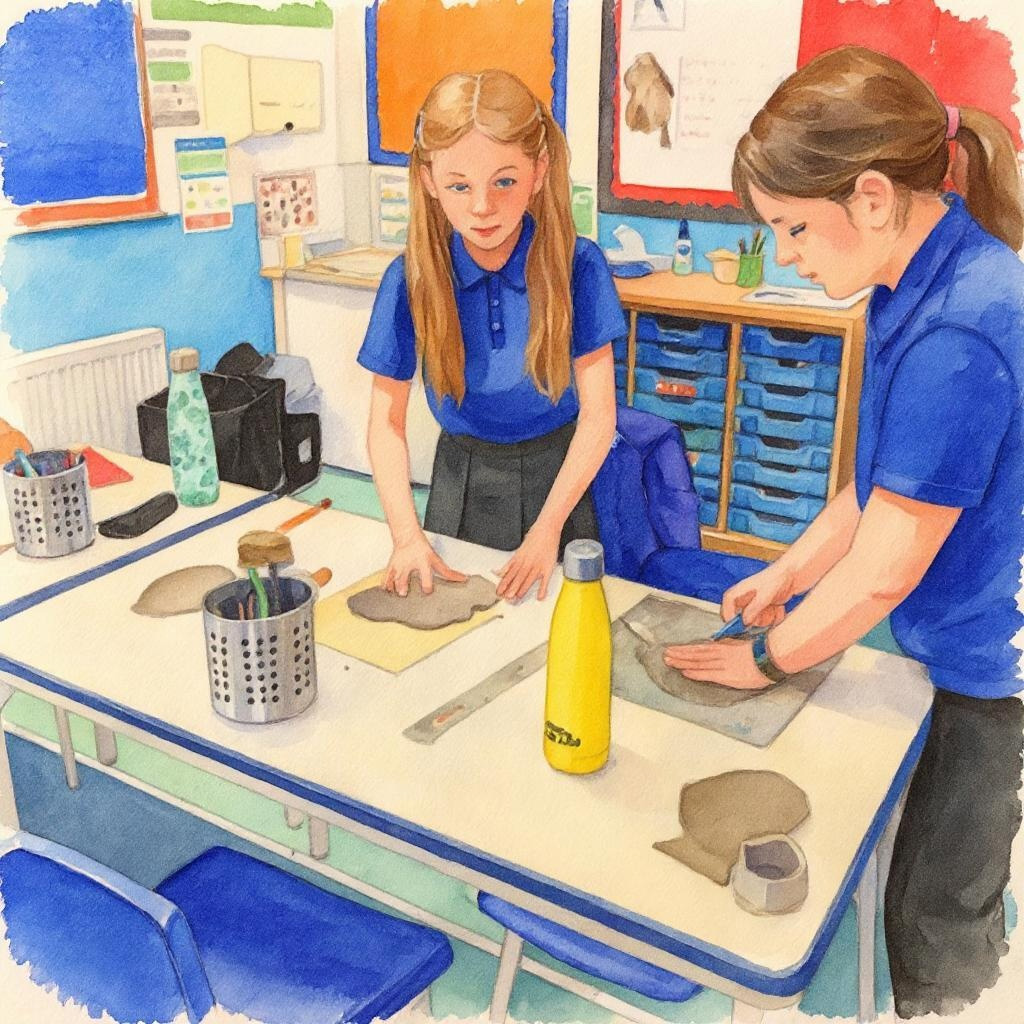The study of art includes learning about a range of media and styles: sculpture, collage, painting, photography, architecture, fashion & textiles, drawing, video and animation, printmaking and design.
As a result of our art curriculum, learners will be able to work with a range of materials/resources including wood, plastic, paper, yarn, clay, fabric, paint, crayon, pastel, charcoal, ink, computer programs and recycled and natural found materials to create visual art. Learners will develop their knowledge and understanding of a diverse range of artworks and artists from first-hand experiences and other sources, representing a variety of styles and created using a broad range of materials/media.
Children will be able to view objects of art and use their observation skills to evaluate, create or recreate. Learners will develop an understanding of the reasons for the creation of art, sources of inspiration and how the creative process works for different artists. Learners will also develop an understanding of the difference between copying, being influenced by, and being inspired by other artists or art works.
Teaching and learning in art is enriched by our focus on international learning. Children will experience and investigate the work of artists, craftspeople and designers from different cultures, including those represented in the home and host countries.

Our aspiration is that children are inspired to be creative and use their imagination and experimentation to express ideas, emotions, observations and experiences in the form of artwork both in and out of school.
To be successful, learners must:
- rehearse, plan and refine ideas and record observations as part of the process of working towards their finished artwork
- Use colour, form, texture and patterns to develop their skills of drawing, painting, 3D modelling, printmaking and digital art with a range of materials
- Develop the confidence to explore, take risks and be reflective about their own work and that of others
- Understand, appreciate, respect and enjoy other people’s visual expressions
- Explore the use of the visual arts in people’s lives now and in the past, developing their knowledge of great artists, architects and designers
- Use appropriate vocabulary and subject-specific terminology in order to articulate and communicate ideas, opinions and feelings about their own work and that of others
- Connect learning within different aspects of art and between art and other subjects (e.g. design technology and history

EYFS Expressive Arts and Design
The development of children’s artistic and cultural awareness supports their imagination and creativity. It is important that children have regular opportunities to engage with the arts, enabling them to explore and play with a wide range of media and materials. The quality and variety of what children see, hear and participate in is crucial for developing their understanding, self-expression, vocabulary and ability to communicate through the arts. The frequency, repetition and depth of their experiences are fundamental to their progress in interpreting and appreciating what they hear, respond to and observe.
Toddlers and young children will be learning to:
- Notice patterns with strong contrasts and be attracted by patterns resembling the human face.
- Start to make marks intentionally.
- Explore paint, using fingers and other parts of their bodies as well as brushes and other tools.
- Express ideas and feelings through making marks, and sometimes give a meaning to the marks they make.
3 and 4-year-olds will be learning to:
- Create closed shapes with continuous lines and begin to use these shapes to represent objects.
- Draw with increasing complexity and detail, such as representing a face with a circle and including details.
- Use drawing to represent ideas like movement or loud noises.
- Show different emotions in their drawings and paintings, like happiness, sadness, fear, etc.
- Explore colour and colour mixing.
- Show different emotions in their drawings – happiness, sadness, fear, etc.
Children in reception will be learning to:
- Explore, use and refine a variety of artistic effects to express their ideas and feelings.
- Return to and build on their previous learning, refining ideas and developing their ability to represent them.
- Create collaboratively, sharing ideas, resources and skills.

Implementation